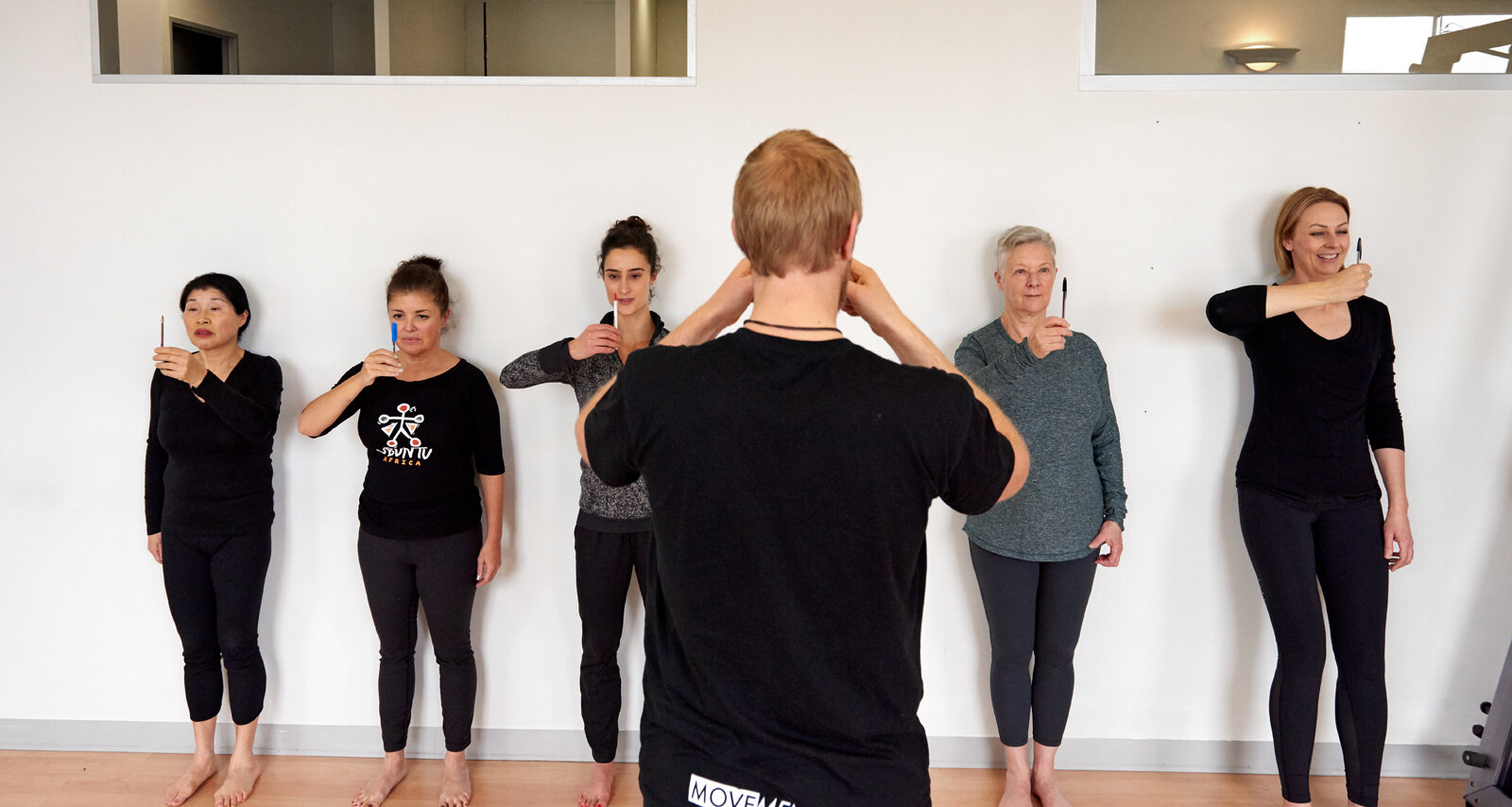The missing link in your teaching
Watch the Neurohacks video here.
So you’ve got your Pilates rep down, and feel super confident that at least 4 out of 5 clients that walk through your door are going to get an awesome experience, regardless of what’s going on with them. But there’s still that lingering client that despite all of your amazing hands ons tactile feedback, and beautiful imagery doesn’t seem to get any better. You’re at your wits end, and the client is also getting a bit perplexed and can’t understand why their situation isn’t changing either - frustrating for both parties really!
Here’s a consideration: perhaps their sensory system simply isn’t balanced?
Here is the reality - as amazing as the body and all of it’s bits and bobs are, they are all focused around ensuring your brain has the resources it needs to survive at any given moment. Your brain is the boss, and it’s making a staggering large number of decisions per second based off the information it receives from the sensory system. So if something isn’t quite connecting properly, that throws the hole system our of whack. And it doesn’t even have to be that big a deal, until put in to situations where the brain is asking for resources that the body just can’t seem to muster for whatever reason. And this is where those outlying clients need to be more thoroughly assessed - because unfortunately all the movement training in the world is going to fix what’s going on. You have to delve deeper, and work the sensory system to correct imbalances before the movements will start to improve.
Let’s go over some of the ways to do this.
Visual system
It’s a bit of a big deal, and actually really simple to work with. Like the rest of your body, you have different muscles and different types of muscles that control the eye. The ones around the outside of the eye are skeletal muscles cells but also pull and change the shape of the eye ball as they contract and relax. Why does that matter? Common visual disorders often related to the light not landing properly on the back the eye ball - you change the shape, you change the where the light lands. So yes, you can throw your glasses away if you train your eyes - true story! Focusing the eye is a bit trickier as that’s controlled by smooth muscle cells via interoceptive system - but then this also links to our ability interpret our environment, and impact the rest of our physiology. Relaxed, open visual fields help the body relaxed, compared to stressful tunnel vision. Emphasising eye positions, integrating eye movements and different visual drills can be very quick and effective in increasing strength and flexibility.
Vestibular system
Made up of semi-circular canals and organs, the movement of the head causes fluid to flow through these canals/organs that flows over tiny hairs and relays back to the brain just how much you’ve moved. This is essential in making sure that you’ve got just enough resistance from the rest of your body to ensure you don’t fall flat on your face when swinging an arm up in front of you when walking. Your vestibular system, via the cerebellum controls the postural muscles in your body, working to make sure your head and eyes maintain a stable position. When it doesn’t function well, you feel sick, but you also feel unstable hence why you have to lie down. That’s because all those muscles that hold you up right aren’t being recruited properly. Emphasising head movements with variable speed and varied eye positions can be a powerful weapon in your movement arsenal.
Skin
Our skin is the largest external sensory organ we have, and generally gets a bit of a hard time. It gets bumped, scratched, cut, tattooed and pierced all the time. Can you imagine doing that to your eye balls?! Here’s the reality - your skin provides large amounts of information to your brain, which then choses how to recruit muscles in certain ways. When you skin is interfered with, the information changes and therefore the muscle recruitment changes. The most common situation I see if surgical scars and tattoos. Even though they may look they’ve healed, there’s been a period of time where things were compensated, and that pattern may have become the new norm, and some parts of your body may not be too happy about it. Work on breaking down scar tissue with massage, rubbing the areas vigorously with a towel to shake up the skin, or apply an essential oil called Helichrysium (either pure or a blend, you can purchase the one we use here) which seems to normalise the skin site again.
Try these basic ideas or watch the Neuro-hacks video for more detailed information. I can also highly recommend the work of Z-health, Posturepro and AMN Academy among many other online education companies for more work on these areas.




